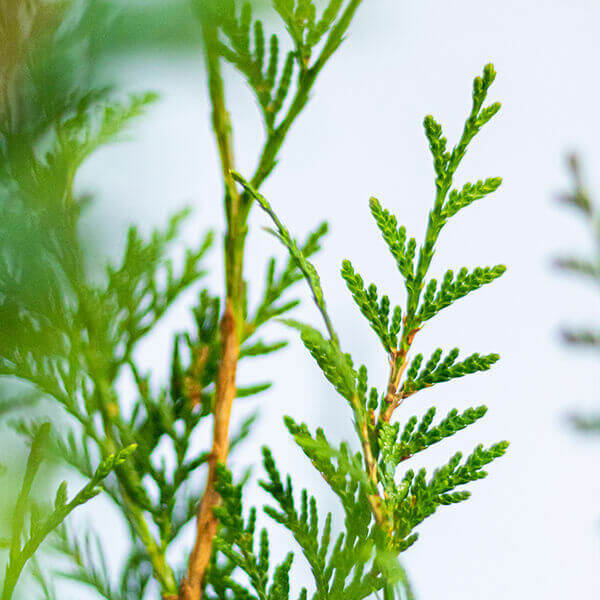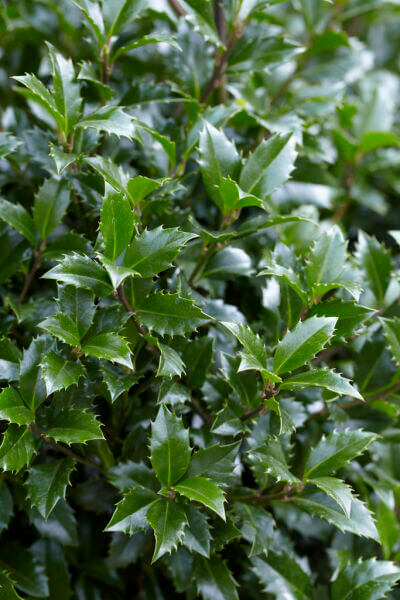Best Hedging Plants For Contemporary Borders
Best Hedging Plants For Contemporary Borders
Blog Article
Scented Hedging Plants For Fragrant Gardens
Boost your garden's attraction with rich hedge varieties such as Yew (Taxus), Thuja, Laurel, Photinia, and Bamboo, celebrated for their structural stability and environmental advantages.
Yew and Thuja offer evergreen protection and winter resilience, while Laurel provides quick growth and broad, aromatic leaves.
Photinia adds seasonal appeal with its lively red foliage, and Bamboo lends a low-maintenance, peaceful ambiance.
These hedges improve air quality, lower noise, and produce tranquil, personal areas.
Proper planting, spacing, and upkeep make sure vigorous growth and eco-friendly harmony.
Explore how these rich ranges can raise your garden's appeal and well-being.
Key Takeaways
Change Your Garden With Lush Hedge Ranges
- Select Yew for its thick, evergreen development and unrivaled durability.
- Go with Laurel for its fast growth and broad leaves, guaranteeing quick personal privacy.
- Pick Photinia for its lively seasonal foliage, which turns a striking dark red.
- Utilize Bamboo for a low-maintenance, winter-hardy hedge with aesthetic appeal.
- Space plants 2-3 per meter and prune routinely for ideal development and health.
Popular Hedge Plants
When changing a garden with rich hedge varieties, it's vital to think about popular hedge plants such as Yew, Thuja, Laurel, and Photinia due to their distinct qualities and benefits.
Yew (Taxus) is extremely esteemed for its longevity and thick, green development, making it a prime option for enduring landscapes.
Thuja is noted for its evergreen foliage and robust winter durability.
Photinia includes seasonal vibrancy with red leaves that darken over time, developing vibrant visual appeal.
Laurel uses quick development and aromatic, broad leaves, suitable for fast privacy.
Furthermore, Bamboo is an outstanding choice for ambiance, offering a low-maintenance, winter-hardy alternative that boosts the garden's visual with its sophisticated, swaying walking sticks.
These selections cater to a range of horticultural requirements and preferences.
Benefits of Garden Hedges
Garden hedges offer a wide range of benefits, making them a valuable addition to any landscape. These natural barriers are affordable to implement and provide substantial wind security, enhancing air circulation and adding to sound decrease. The dense foliage of hedges like Thuja and Beech ensures personal privacy by obstructing visibility, developing a secluded and tranquil environment.
Hedges also play an essential function in microclimate regulation, supplying a stable environment that fosters plant growth and minimizes temperature level variations. Their complex leaf structures filter contaminants, improving air quality and contributing to a much healthier garden environment.
Furthermore, hedges stand out in noise reduction, soaking up and deflecting sound waves to lower ambient sound levels. This dual performance of providing both visual and acoustic privacy boosts the general harmony and aesthetic appeal of any garden.
Planting and Maintenance Tips
For an effective hedge, meticulous preparation of the planting location is crucial. Make sure the soil has proper pH and drain to support strong root advancement.
Space the plants appropriately for the chosen species. Water the hedge regularly during its initial development stage, adjusting as required with seasonal modifications.
Implement a organized pest control and illness avoidance strategy, using chemical or natural treatments when essential. Regularly inspect for aphids, mites, and fungal infections.
Apply mulch to keep wetness and suppress weeds. Seasonal pruning promotes thick growth and air flow, vital for plant health.
Following these standards will assist you cultivate a lively, well-kept hedge that boosts the appeal of your garden.
Spacing and Cutting Standards
Spacing and Trimming Standards
Proper spacing and trimming are vital for cultivating healthy, visually appealing hedges. Appropriate spacing guarantees each plant gets adequate nutrients, light, and air flow.
Follow these standards for optimum hedge upkeep:
- Spacing: Position hedge plants 2-3 plants per meter to motivate robust development.
- Pruning Methods: Regular pruning is vital for preserving preferred hedge height and shape. Cut brand-new growth in summertime and cut back older wood during winter.
- Seasonal Care: Adjust cutting schedules and approaches according to seasonal requirements to make sure plant health.
- Hedge Height: Routinely screen and cut to preserve the wanted hedge height and accomplish consistent visual appeals.
Complying with these steps will ensure your hedge thrives, boosting both the appeal and performance of your garden.
Selecting the Right Hedge
Choosing the Right Hedge
Selecting the proper hedge involves evaluating aspects such as fully grown height, foliage density, and environmental durability. Successful hedge plant selection needs understanding each species' development qualities and site-specific adaptability.
For instance, Yew (Taxus) offers exceptional durability and thick development, while Thuja is significant for its winter resilience. Furthermore, considering upkeep requirements is essential; fast-growing types like Laurel or Privet demand routine trimming, whereas low-maintenance choices like Bamboo or Ivy might be more suitable for those seeking very little upkeep.
Ecological elements such as soil type, light availability, and moisture conditions should also assist the selection procedure. This mindful method ensures the selected hedges will grow, offering both functional and visual benefits to the garden landscape.
Shipment and Planting Guidance
To guarantee your hedge plants thrive, they ought to be provided by specialized carriers and planted promptly upon arrival.
Follow these vital actions for successful planting:
- Soil Preparation: Enhance the soil with raw material to enhance drainage and nutrient content.
- Planting Depth: Produce a trench two times the width and equivalent to the depth of the root ball.
- Watering Methods: Water completely after planting, keeping the soil regularly wet but not saturated.
- Mulching: Use a layer of mulch to retain wetness and suppress weeds.
Client Assistance and Service
Provided the essential function of prompt help in horticultural pursuits, our customer support team is offered 6 days a week through telephone, e-mail, and social media to offer professional recommendations and promptly resolve any issues. Their devotion to fast response times ensures customer complete satisfaction by fixing questions connected to plant health, optimum planting approaches, and upkeep schedules.

Within 24 hours
Within 24 hr
This extensive support group, enhanced by a stellar 9.3/ 10 client score, highlights our dedication to boosting the gardening experience for every client.
Frequently Asked Questions
For How Long Does It Take for Hedge Plants to Establish?
Hedge plants normally need one to 3 years to end up being completely developed, with the precise period varying by types and growing conditions.
Reliable care throughout this important duration is vital for robust development. Constant watering, watchful weed control, and proper fertilizer application are pivotal in promoting strong root advancement.
For instance, fast-growing types like Laurel might develop quicker, while slower-growing varieties such as Yew might take longer. Diligent upkeep speeds up the establishment procedure, leading to dense and healthy hedges.
What Are the Finest Hedge Plants for Privacy?
The question of the finest hedge plants for privacy includes assessing evergreen and deciduous options.
Evergreen hedges like Thuja, Laurel, and Cypress supply year-round coverage, making sure continuous privacy.
On the other hand, deciduous hedges such as Beech offer seasonal personal privacy, shedding leaves in colder months.
Key upkeep suggestions for personal privacy hedges include routine cutting, fertilizing in spring, and appropriate spacing-- normally 2 to 3 plants per meter.
Furthermore, constant watering and diligent weed elimination are important for promoting healthy, thick development.
Can Hedge Plants Bring In Wildlife to My Garden?
Yes, hedge plants can draw in wildlife to your garden by providing necessary benefits like shelter, food, and nesting sites, consequently enhancing regional biodiversity. Yew, holly, and laurel are outstanding for attracting birds, while ivy supports a variety of pests.
However, it is essential to note that there are some downsides, such as increased maintenance to handle pests and routine maintenance. Carefully picking and maintaining hedge varieties can assist balance these benefits and downsides, ultimately cultivating a sustainable and dynamic ecosystem in your garden.
Are There Any Blooming Hedge Plants Available?
Yes, there are flowering hedge plants available that can improve the appeal of your garden.
For example, Elaeagnus, also referred to as Olive Willow, produces aromatic white flowers in the fall, adding a touch of sophistication.
Photinia, another popular choice, showcases dynamic red leaves that grow into a rich green, creating a vibrant visual result throughout the seasons.
To make sure these plants thrive, it's important to practice correct pruning techniques and seasonal maintenance, such as cutting brand-new development in the summer and cutting back in the winter.
These steps will assist keep the health and visual appeal of your blooming hedges.
How Do I Avoid Bugs in My Hedge Plants?
To prevent pests in hedge plants, employ natural pest control methods and preserve appropriate hedge care. Introduce useful pests like ladybugs, which victimize damaging bugs, to develop a well balanced ecosystem.
Frequently check your hedges for signs of infestation and quickly remove any affected parts to prevent the spread. Make sure the health of your hedges by using well balanced fertilizers and offering sufficient water.
Make use of mulching to maintain soil wetness and appropriate spacing to decrease plant stress and promote robust development. These practices jointly help in minimizing insect problems and maintaining a healthy hedge.
Conclusion
In essence, choosing the ideal hedge ranges such as Yew, Thuja, and Laurel can transform any garden into a peaceful sanctuary. These plants supply year-round greenery, enhance visual appeal, and deal practical advantages like sound reduction and wind defense.
Appropriate planting strategies, accurate spacing, constant watering, and seasonal cutting are important for optimal development.
Reliable shipment services and professional consumer assistance ensure a smooth experience from purchase to planting, making it simpler than ever to raise your outdoor area.
Garden hedges provide a multitude of advantages, making them a valuable addition to any landscape. These natural barriers are cost-efficient to execute and offer significant wind security, website enhancing air flow and contributing to noise reduction. The thick foliage of hedges like Thuja and Beech guarantees personal privacy by obstructing exposure, creating a secluded and tranquil environment.

Pruning Techniques: Routine pruning is necessary for preserving desired hedge height and shape. Cut brand-new growth in summer and cut back older wood throughout winter.
Report this page